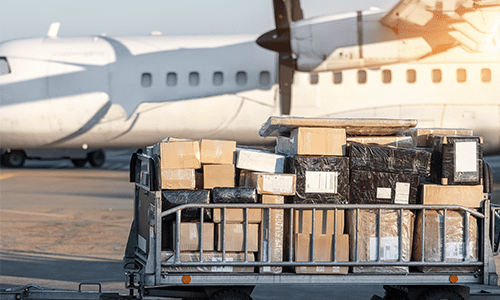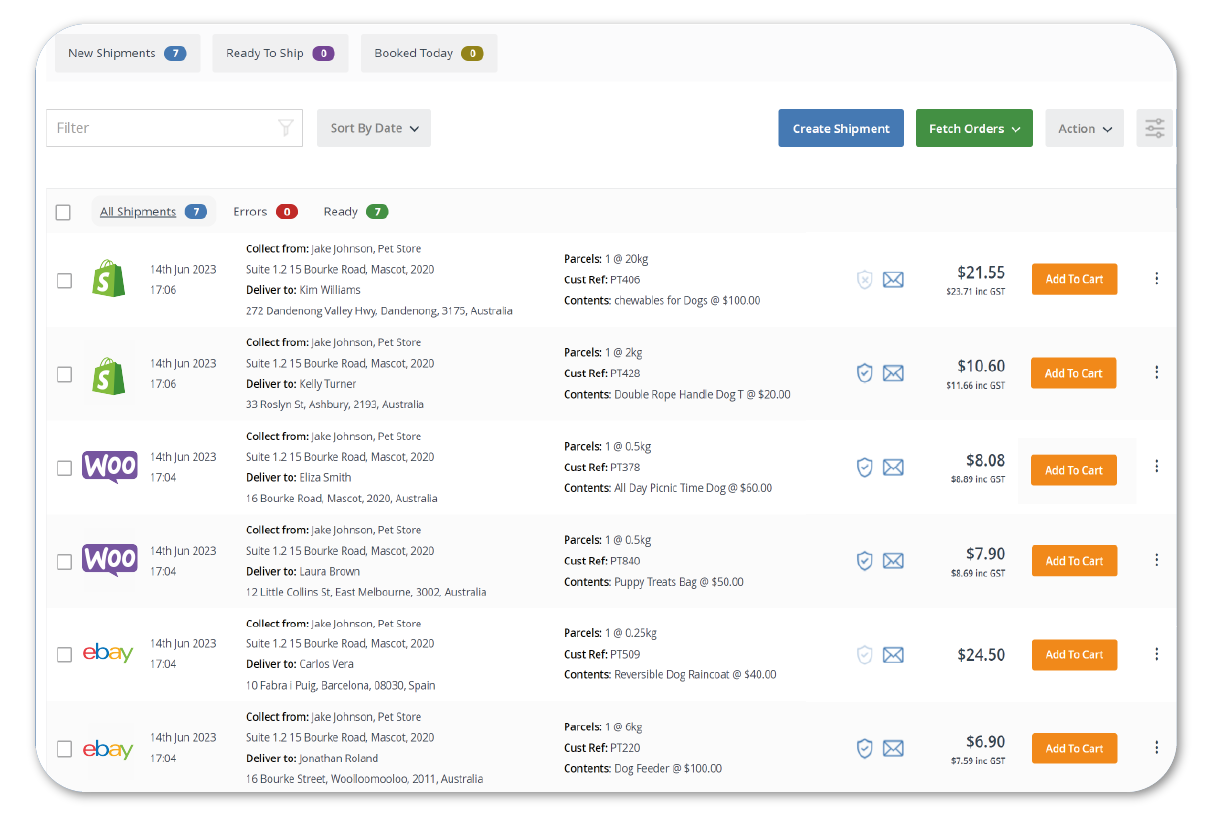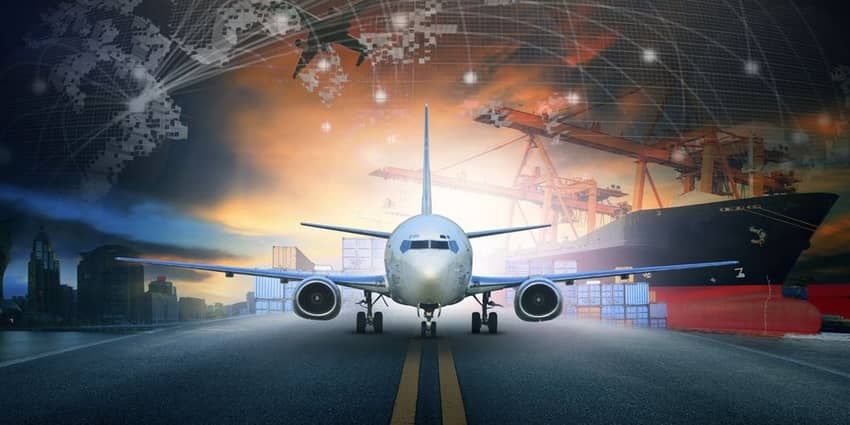If you're running an ecommerce store in Australia, there's never been a better time to expand your reach globally. With over 2.7 billion online shoppers worldwide, even a small slice of that audience can significantly boost your sales. According to Australia Post's 2023 Ecommerce Report, 6% of international customers bought from Australian retailers in 2022. That translates to around 162 million global shoppers, more than six times our national population!
But international shipping isn’t just a matter of slapping on a label and hoping for the best. From customs documents to courier selection, there’s a lot to navigate. In this guide, we’ll walk you through everything you need to know to ship overseas smoothly, avoid costly mistakes, and grow your business internationally.
What Is International Shipping and Why Does It Matter?
International shipping is the process of transporting goods from one country to another. When shipping for ecommerce, this means fulfilling customer orders across borders, navigating customs laws, taxes, tariffs, and international courier services.
Offering international delivery is no longer a bonus, it’s essential to compete. Customers want transparency, speed, and reliability, no matter where they live. Getting this right helps build trust, increase conversions, and open up entire new markets.

How Do I Ship Internationally?
Shipping internationally involves more than just picking a courier and printing a label. To ensure successful cross-border delivery, you need to approach it methodically and understand the logistics behind each step.
Here are the essential components you’ll need to master:
- Customs documentation: International shipments require accurate paperwork. At a minimum, you’ll need a commercial invoice listing product descriptions, values, HS codes, and country of origin. For certain destinations or goods, certificates of origin or special licences may also be needed.
- Product packaging and labeling: Parcels must be well-packaged for long-distance travel. Use sturdy, double-corrugated boxes and secure internal padding. Labels should be clearly printed, waterproof if possible, and include both destination and return addresses. Any customs declarations or tracking barcodes should be easily visible.
- Courier selection: Not all couriers deliver to every country or offer the same services. Some specialise in time-sensitive express shipping, others in cost-effective economy rates. Choose based on your delivery speed, budget, product type, and whether customs clearance assistance is included.
- Duties and taxes: You’ll need to understand the tax implications in your customer’s country. Will the buyer pay duties on arrival (DDU), or will you cover them in advance (DDP)? Knowing this helps avoid surprise charges and unhappy customers.
- Tracking and customer communication: Once the parcel is in transit, provide visibility. Use automated tracking tools and branded tracking portals to update customers at each stage. Good communication builds trust and reduces 'Where is my order?' inquiries.
These are the core steps to successful international shipping. When planned carefully and supported by the right tools, they turn global delivery into a repeatable, scalable process, one that even small ecommerce businesses can execute with confidence and professionalism.
10 International Shipping Strategies to Ship Worldwide for Ecommerce
Now that you understand the core components of international shipping, it’s time to go a level deeper. The following strategies are designed to help you fine-tune your approach, avoid costly mistakes, and turn international delivery into a true growth engine. Let’s take a closer look at ten proven tactics that can help you ship smarter and scale globally with confidence.
1. Packaging Matters
Shipping items over long distances requires high-quality packaging, especially for fragile items. We recommend using a double-corrugated box for all your international deliveries. These provide extra protection against sudden impacts and rough handling during transit, reducing the risk of breakage and damage.

Here are some valuable packaging tips to consider:
- Avoid overfilling packages to maintain their shape and prevent warping that can affect measurements.
- Couriers measure the largest dimensions automatically, regardless of whether they are part of the box, so ensure there are no loose ends or excessive sealing.
- Round up dimensions by one to two centimeters to account for potential bumps and shape changes on automated conveyor systems.
- When measuring your parcel, place the box against a wall for the most accurate readings.
- Double-check your measurements to ensure accuracy before the courier arrives.
- Take photos of the dimensions you've recorded to have evidence in case of disputes regarding the box's measurements.
These tips will help you ensure your parcels are properly packaged and accurately measured for successful international shipping.
Properly labeling your parcel is equally essential. International shipments involve a complex network of carriers and customs processes, and accurate labeling is crucial for a seamless journey. Include all the necessary details, such as the recipient's address, your return address, and any required shipping labels or customs documentation.
2. Complete a Commercial Invoice
The most important document you must complete for international delivery is the commercial invoice. Filling it out incorrectly doesn't just result in delays. It costs you money. There are five items you need to specify:
- The country of origin where the merchandise is from.
- Your name and address, as well as the recipients.
- A detailed description of the item, including what it's made of and used for.
- Quantities and weights of the product.
- The purchase price of each item.

You can use a customs broker to help process the item. However, if you're shipping with Interparcel, the carrier you've chosen inherits this responsibility, and they will manage everything on your behalf. To help them out, be sure to include these extra details:
- A tariff code.
- A certification of origin.
- A copy of known Free Trade Agreements, if it's required.
3. Choose the Right International Courier
Choosing the right courier for international delivery is critical. Not all carriers offer the same level of service, speed, or reliability in every region. Your choice can significantly impact delivery timelines, costs, customer satisfaction, and even customs clearance success.

Here’s a quick comparison of popular international couriers to help you evaluate options based on your shipping needs:
| Courier | Strengths | Best For |
|---|---|---|
| UPS | Global reach, express delivery | Time-sensitive parcels |
| FedEx | End-to-end tracking, reliability | High-value items |
| TNT | Premium service, great options for B2B | Time-Critical Express Delivery |
| Aramex | Cost-effective, solid coverage in emerging markets | Lightweight or less urgent shipments |
Tips for choosing wisely:
- Use multiple carriers: Optimise for speed, service type, and cost across different destinations.
- Check service maps: Ensure the courier has strong coverage in your target delivery countries.
- Look for couriers that provide customs invoice forms: This makes it easier to understand exactly what information you need to include for smooth customs clearance.
As your international orders grow, adopting a multi-carrier strategy often provides the flexibility and reliability needed to scale smoothly.
4. Transit Warranty is Crucial
Items travelling overseas face the risk of damage or loss. Transit warranty protects your business from financial losses arising from these occurrences. It covers the costs incurred, so you’re not left out of pocket.

With Interparcel, the first $100 of transit insurance coverage is free with the service. For items worth more, the cost is calculated at 2% of the item's value up to a maximum of $2,000. Just note that ATL services are not covered under this warranty.
5. Know the Rules
Familiarise yourself with the restrictions for the countries you plan on shipping to. Different regions enforce rules for items crossing their borders. It’s vital to comply with guidelines to avoid issues with customs or potential fines for transporting prohibited items.
Every package, irrespective of its size, must be cleared by customs. Providing accurate paperwork can speed up the process. You’ll need a customs form from the originating country and another for the destination country. It's crucial to complete both to ensure the safe delivery of your parcels to their intended location.
6. Understand International Taxes
If you want to ship your parcels worldwide, then you're going to need to ensure you have a thorough understanding of the various international duties and taxes before booking. You'll also need to stay up to date with any changes that may occur.
For example, in 2021, the European Union changed its VAT rules. It removed the import VAT exemption and introduced an import one-stop shop. The situation is different in the US and other countries too. However, when you choose the right international courier service, they can walk you through all the necessary steps to help avoid delays and surcharges.
7. Set Realistic Delivery Expectations
Naturally, international shipping involves longer delivery times compared to domestic services. As such, you’ll need to find ways to keep customers updated on the parcel's status. It could be through email or SMS notifications. Alternatively, you can refer them to an online portal for updates.
Another solution is to provide live shipping rates at checkout. This feature comes with estimated delivery timeframes so customers can plan ahead to accept it. Plus, if the item is received within the period promised, they will likely shop with you again.
8. Importing Your Products
If you want to sell products from overseas in Australia, take the time to also learn about importing goods into the country.
Importing has many benefits, including reducing production costs, increasing revenue, and offering a unique product range that may not be available here. Australia imports around $187 billion per year, which includes not only oil but also smartphones ($8.5 billion), computers ($7.2 billion), and delivery trucks ($7.5 billion).
Much like exporting, you'll need to understand the tariffs and taxes you may have to pay. It's also vital to correctly label and package products before they get sent here. Thankfully, Interparcel specialises in importing goods. You can gain the experience of using expert carriers like TNT and UPS to help clear your items when they arrive.
9. Strategic Shipping Promotions
Shipping internationally isn’t cheap. You’ll need to find a way to maintain these costs while remaining competitive. You can shop for the best courier that meets your budget requirements. Another option is to get strategic around shipping promotions. Here are some popular options:
- Free shipping: This solution can meet customer expectations and decrease cart abandonment rates. But free shipping does come at a cost to your business. Consider setting a threshold before a customer is eligible for it. If you need alternate strategies for this offering, check out this article.
- Flat rate shipping: Offering a fixed rate for delivery allows customers to budget while shopping on your store properly. However, you’ll need to be careful with the amount you set so you don’t run at a loss.
- Live shipping rates: Put the decision on how much to charge in the hands of your customers. Providing full transparency at checkout not only builds trust but also reduces cart abandonment rates. Watch this video to find out how to activate it.
- Mix up your shipping strategies: No rule says you can’t regularly change delivery promotions. Mix it up throughout the year and showcase your best offers during peak sales periods.
10. Speed Up Your Shipping Fulfilment
International shipping is more complicated than sending parcels domestically. But that doesn’t mean it should take up precious time in your busy day. With the right shipping technology, you can streamline fulfilment without compromising on quality. Here are a few Interparcel tools that can help:
- Shipping Manager: Compare rates from multiple international courier providers in one place to find services that meet your requirements and budget.
- Branded Tracking Portal: Give customers access to a personalised parcel tracking portal showcasing your brand and logo. They can monitor their delivery progress at every stage.
- Rule Manager: Automate repetitive tasks for more efficient fulfilment. For example, you can create shipping rules for products destined for particular countries or choose specific couriers for certain destinations.
- Smart Boxing: Let our algorithm recommend the most cost-effective method to prepare multi-item orders.
Automating shipping processes reduces errors and can support you as you expand your ecommerce empire.

How to Make International Delivery Easy
Taking your business global might seem daunting, but with the right strategy, tools, and partners, it’s completely doable.
From understanding customs paperwork and taxes, to choosing the right couriers and protecting your parcels with transit warranty, international shipping is no longer just for big brands. With smart packaging, live shipping rates, and automation tools like Smart Boxing and Rule Manager, even small businesses can fulfil global orders efficiently and cost-effectively.
You've now got the knowledge. You’ve got the strategies. And with Interparcel, you’ve got a partner that simplifies the entire process, connecting you to top international couriers and powerful fulfilment tools, all in one easy platform.
The world is ready for your products. Don’t let shipping hold you back.










 Facebook
Facebook Twitter
Twitter Instagram
Instagram Linked In
Linked In YouTube
YouTube